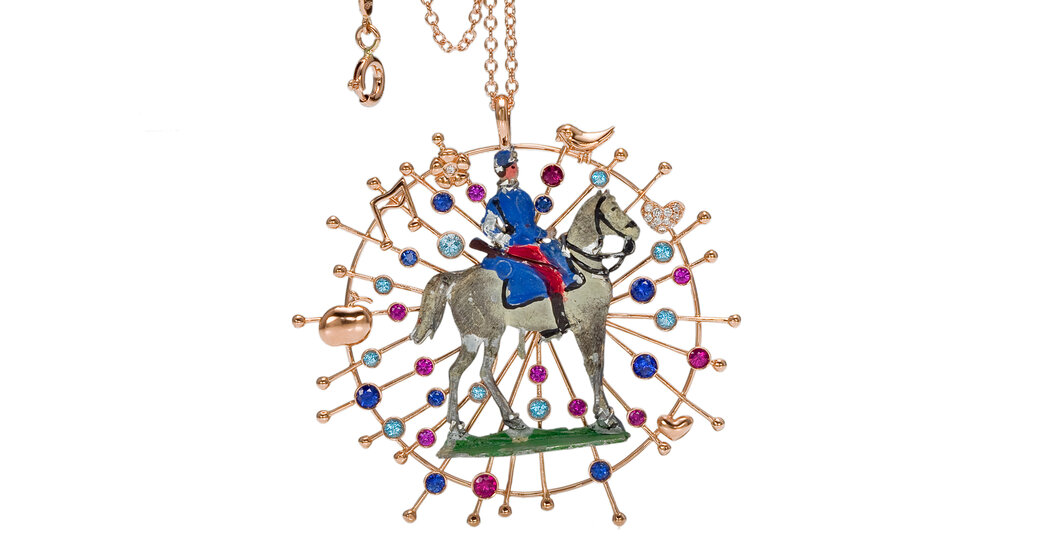In London, Louisa Guinness Gallery collaborates with contemporary artists to create limited-edition jewelry, continuing the concept of art jewelry as established in the mid-20th century by the sculptors Alexander Calder and Claude Lalanne. Ms. Guinness’s gallery sells their own, along with pieces in silver, copper, porcelain, polyamide, glass and crystal as well as in gold and diamonds designed by the likes of Cornelia Parker, Yinka Shonibare and Ron Arad.
“People have become less concerned about the raw materials as long as a piece is beautifully made,” Ms. Guinness said. “People used to scoff at wood or glass or bronze in fine jewelry, but now it’s more accepted.”
She likened the market for artists’ jewelry to that of contemporary art; she recalled a silver necklace by Calder that sold for $2 million at Sotheby’s New York in 2013. “The cost of the materials is inconsequential,” she said. “Canvas and paint aren’t expensive, but a Picasso is hugely valuable.”
Since Ms. Guinness established the gallery in 2003, advanced production techniques such as laser sintering and 3-D printing have enabled artists using commonplace materials to achieve finishes that could not have been achieved in the past. “A piece made in bronze might sell for a little bit less than the same design in gold — but not a lot less,” Ms. Guinness said.
Jane Collins, senior editor for accessories, footwear and jewelry at the trend forecasting organization WGSN, said that even outside the world of artists’ jewelry, designers were more frequently reaching for unconventional materials. The trend is driven partly by the public’s increasing desire for uniqueness, she said, and partly because of concerns about sustainability.
“The price of raw materials no longer has a huge impact on the perceived value of jewelry — the value is all in the design and craftsmanship,” she said. “I don’t think it matters if a designer is using wood, sea glass or even asbestos. It’s what they combine it with and the labor involved that make it valuable, especially when it comes to limited-edition or one-of-a-kind pieces.”
Sumber: www.nytimes.com










